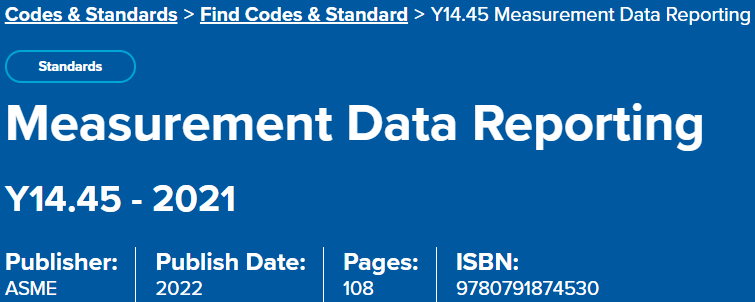I am pleased to announce that the ASME Y14.45 standard for Measurement Data Reporting has finally been published! As a founding member and vice-chair of the development subcommittee, this is a very proud moment.
The primary objective of Y14.45 is to provide standardized definitions and formats for reporting GD&T measurement data. This makes it extremely relevant to CMM inspection and I'm optimistic that Y14.45 will become a must-have document for CMM professionals. I expect that the standard will reinforce a lot of what you know already, and provide guidance on some more complex issues that have historically been left open to interpretation. We made a real effort to address difficult topics such as profile reporting, MMC and bonus tolerance, surface interpretation, patterns, composite FCF's, and optimization.
I also expect that Y14.45 will be a great aid for understanding the GD&T functionality in PC-DMIS. I know from committee colleagues that Hexagon has invested a lot in making PC-DMIS follow the GD&T standards more closely.
Just as importantly, I believe that Y14.45 will be a great help (and eye-opener) for those not directly involved in dimensional metrology. It will help them to appreciate how difficult and complex GD&T gets when you need to to go beyond Pass/Fail and actually calculate numbers from the measurements!
Y14.45 is available now in PDF format, and the hard copy version is schedule for Jan 26. Here is a link for ordering:
https://www.asme.org/codes-standards/find-codes-standards/y14-45-measurement-data-reporting/2021

I'm expecting that the Y14.45 standard will generate a lot of questions and comments and I'm looking forward to the dialogue. Feel free to fire away or contact me privately.
Evan Janeshewski
Axymetrix Quality Engineering Inc.
Y14.45 Measurement Data Reporting - ASME
https://www.asme.org/codes-standards/find-codes-standards/y14-45-measurement-data-reporting/2021
